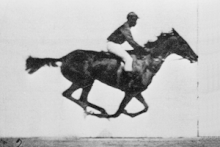Arguably the most prominent attribute about the Japanese culture would be the utilization of chopsticks. Before I go in depth though, I would like to annihilate the common misconception way-too-many peoples have- Japanese women don't insert chopsticks in their hair. Ever. Needless to say, chopsticks are mere tools used for eating, and in the same way that Westerners would not stab themselves with a spoon or fork in their head, Japanese people try to keep their cutlery as hygienic as possible. The "stick" that traditional Japanese women use as a hair accessory is called a kanzashi. A kanzashi is not, and will never be used for eating.
Now, let me move on to explain the "chopstick rules" which must be followed when in Japan. Chopsticks were originally introduced to Japan from China, however, the Japanese have completely revolutionized chopsticks; from the manufacturing stage to the actual usage of it.
Firstly, at the table, mismatched chopsticks, whether in length, shape, color etc., should not be used. This is only because placing mismatched chopsticks as one is aesthetically unpleasant, which is quite simple right? The next rule which must be followed is that, chopsticks should always be placed parallel to the edge of the table where one is seated (horizontally in front of a person), and the thinner extreme of the chopsticks facing the left. Quite often chopsticks are accompanied by a "hashi-oki", which translates to chopstick rest. The chopsticks are placed in this way on the hashi-oki because one must firstly grab the thinner extreme of the chopsticks with the dominant hand, slide the hand across to the other side, lift the chopsticks up, hold the thin end of the chopsticks with the other hand, and with its support, hold the chopsticks in its righteous way.
Firstly, at the table, mismatched chopsticks, whether in length, shape, color etc., should not be used. This is only because placing mismatched chopsticks as one is aesthetically unpleasant, which is quite simple right? The next rule which must be followed is that, chopsticks should always be placed parallel to the edge of the table where one is seated (horizontally in front of a person), and the thinner extreme of the chopsticks facing the left. Quite often chopsticks are accompanied by a "hashi-oki", which translates to chopstick rest. The chopsticks are placed in this way on the hashi-oki because one must firstly grab the thinner extreme of the chopsticks with the dominant hand, slide the hand across to the other side, lift the chopsticks up, hold the thin end of the chopsticks with the other hand, and with its support, hold the chopsticks in its righteous way.
And all of that happens prior to the actual meal. Once the meal starts, that's a different story. Countless chopstick laws must be followed, like never ever passing food from chopstick A to chopstick B. Yes, a pair of chopsticks belonging to a person should never touch another pair belonging to another person. This is because Japanese people handle corpses with a different kind of chopsticks, so when two pairs of chopsticks touch, that alludes to the act of handling a cremated body. Moreover, a person should never stab a food item with chopsticks either because they are meant to just pick foods up, and stabbing a pair of chopsticks also alludes to death. (Japanese people often mourn by inserting short and thin sticks into a bowl full of sand, and the sticks are ignited at one end, and when all the sticks burn out like a candle, that signifies the end of somebody's life.) ...Who knew chopsticks could actually signify death?
Unsurprisingly, there are many many more taboos when it comes to chopsticks, like never licking them, never drawing a plate towards you using them, never stuffing too much food using them etc.
And that's how the Japanese people feel about chopsticks. In a country where change is the norm, the laws of chopsticks seem to have made a pretty big impact. After all, Japanese people have been using chopsticks for over 1000 years. I guess some things never change.
Unsurprisingly, there are many many more taboos when it comes to chopsticks, like never licking them, never drawing a plate towards you using them, never stuffing too much food using them etc.
And that's how the Japanese people feel about chopsticks. In a country where change is the norm, the laws of chopsticks seem to have made a pretty big impact. After all, Japanese people have been using chopsticks for over 1000 years. I guess some things never change.






